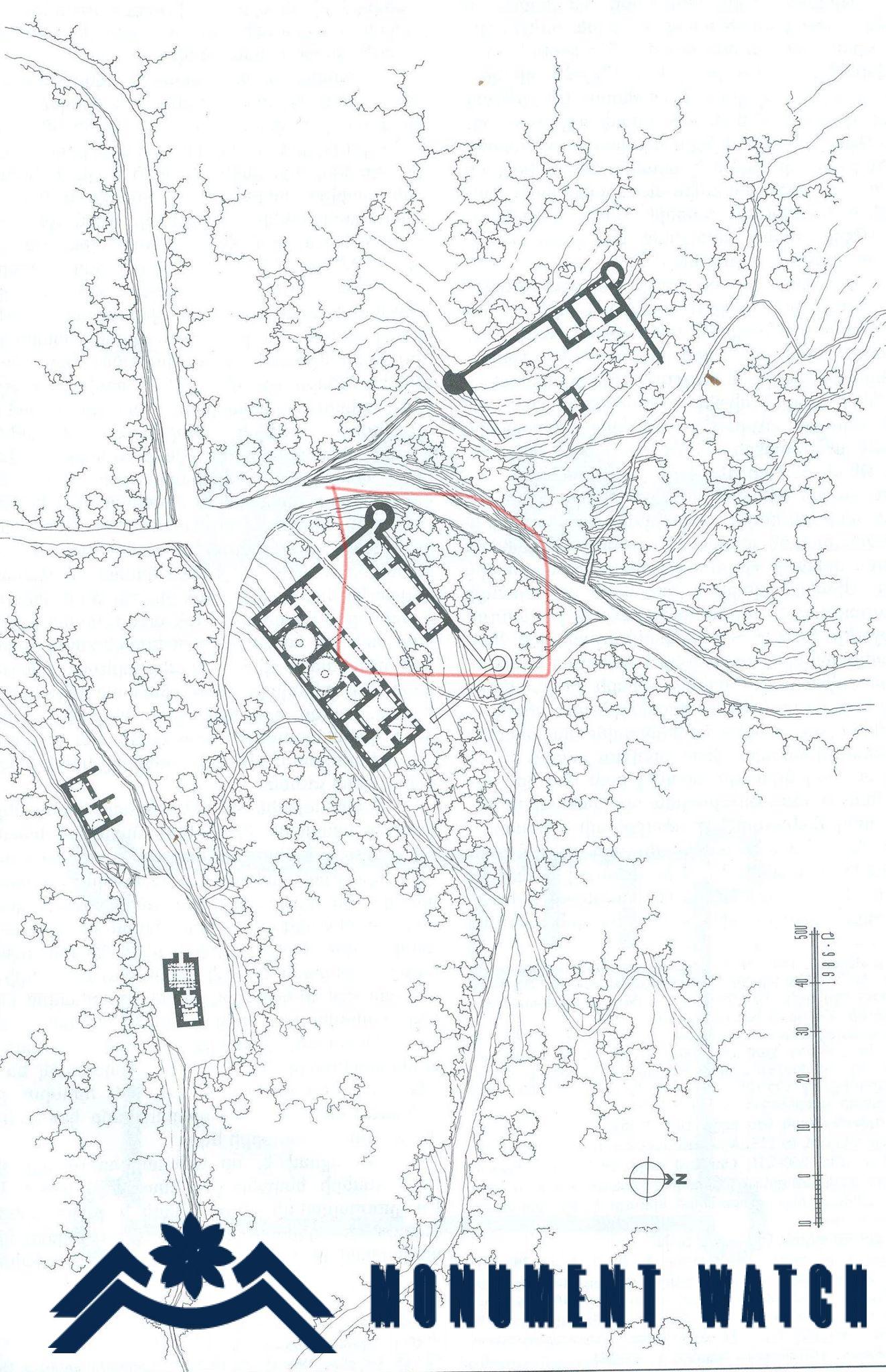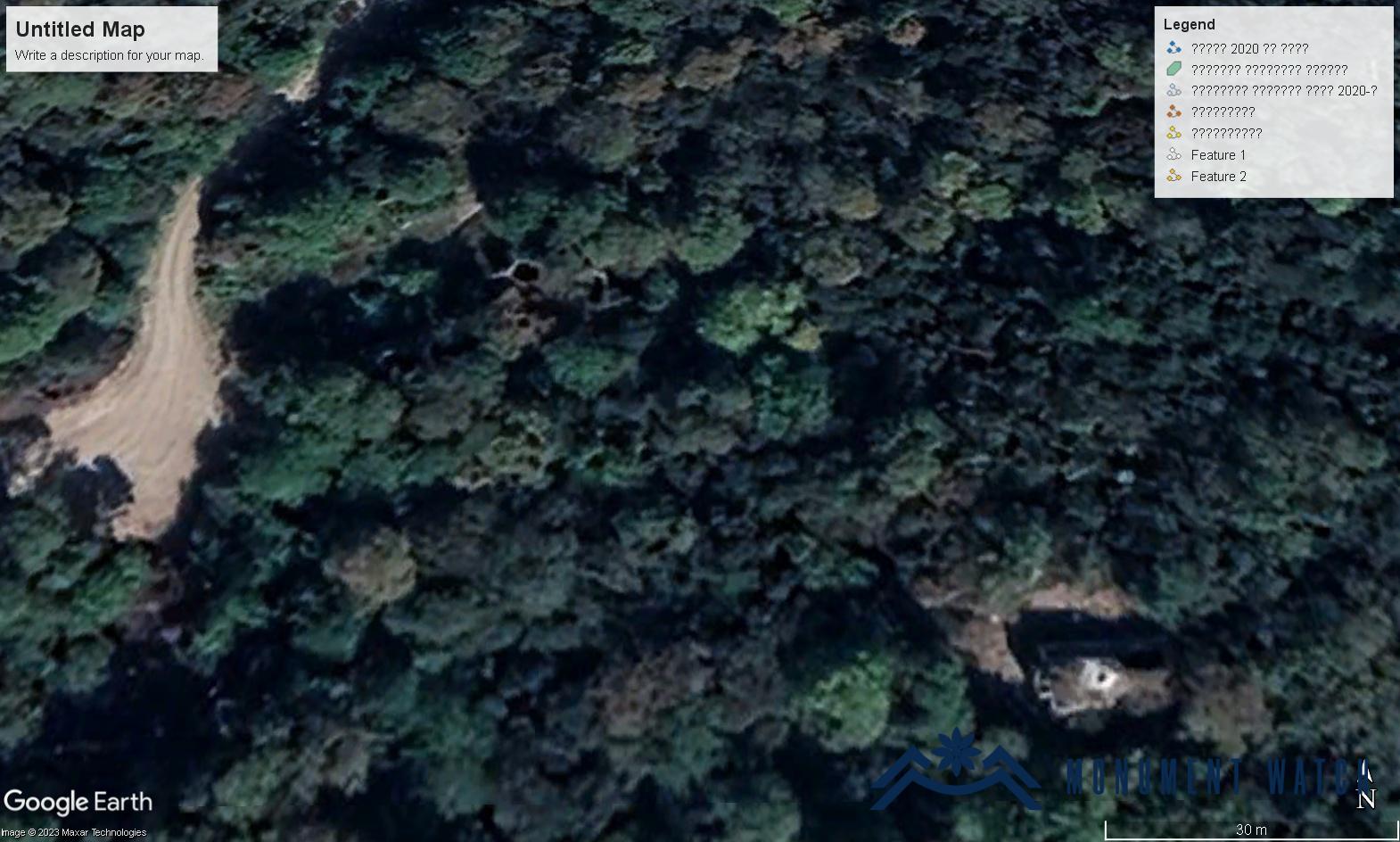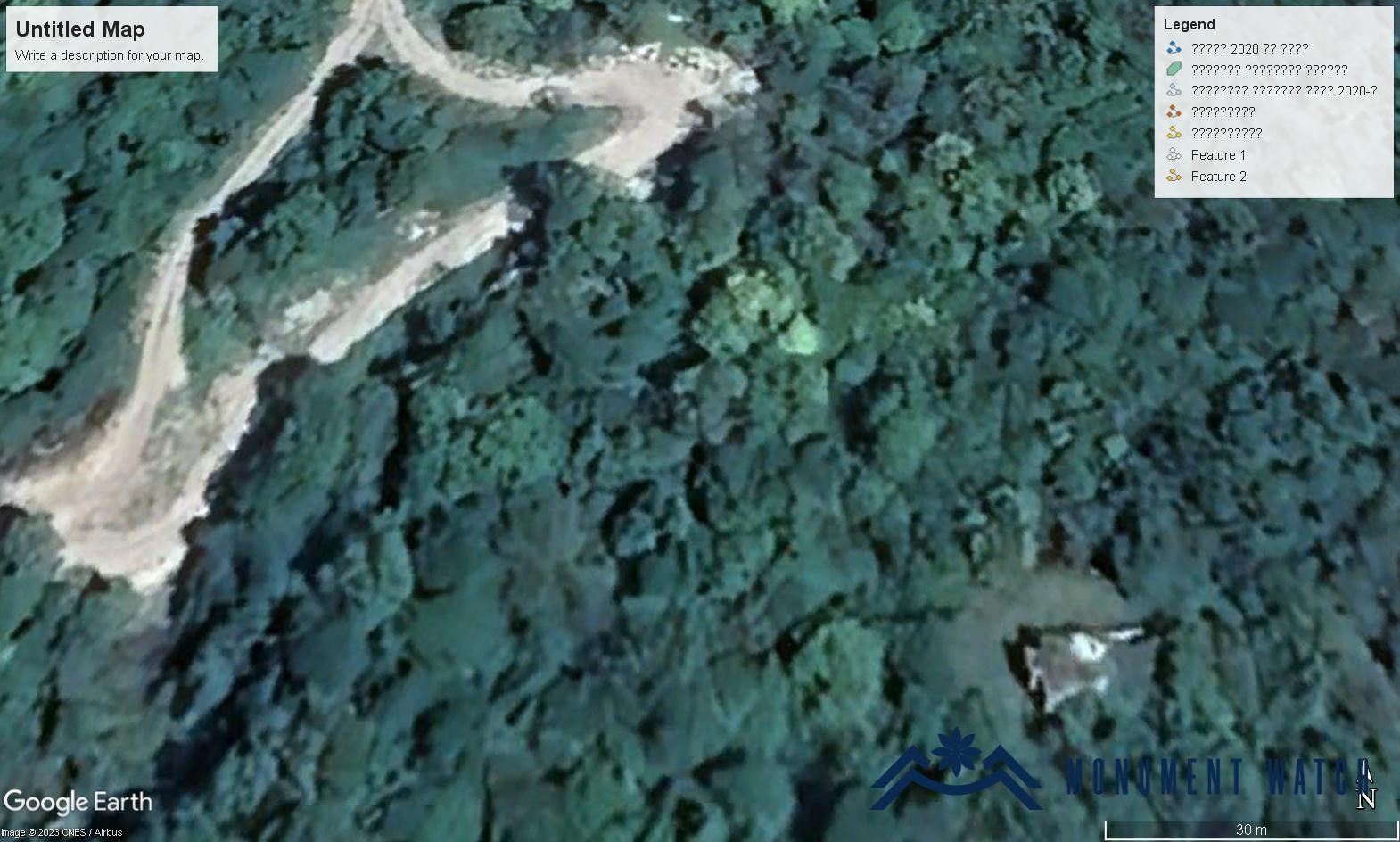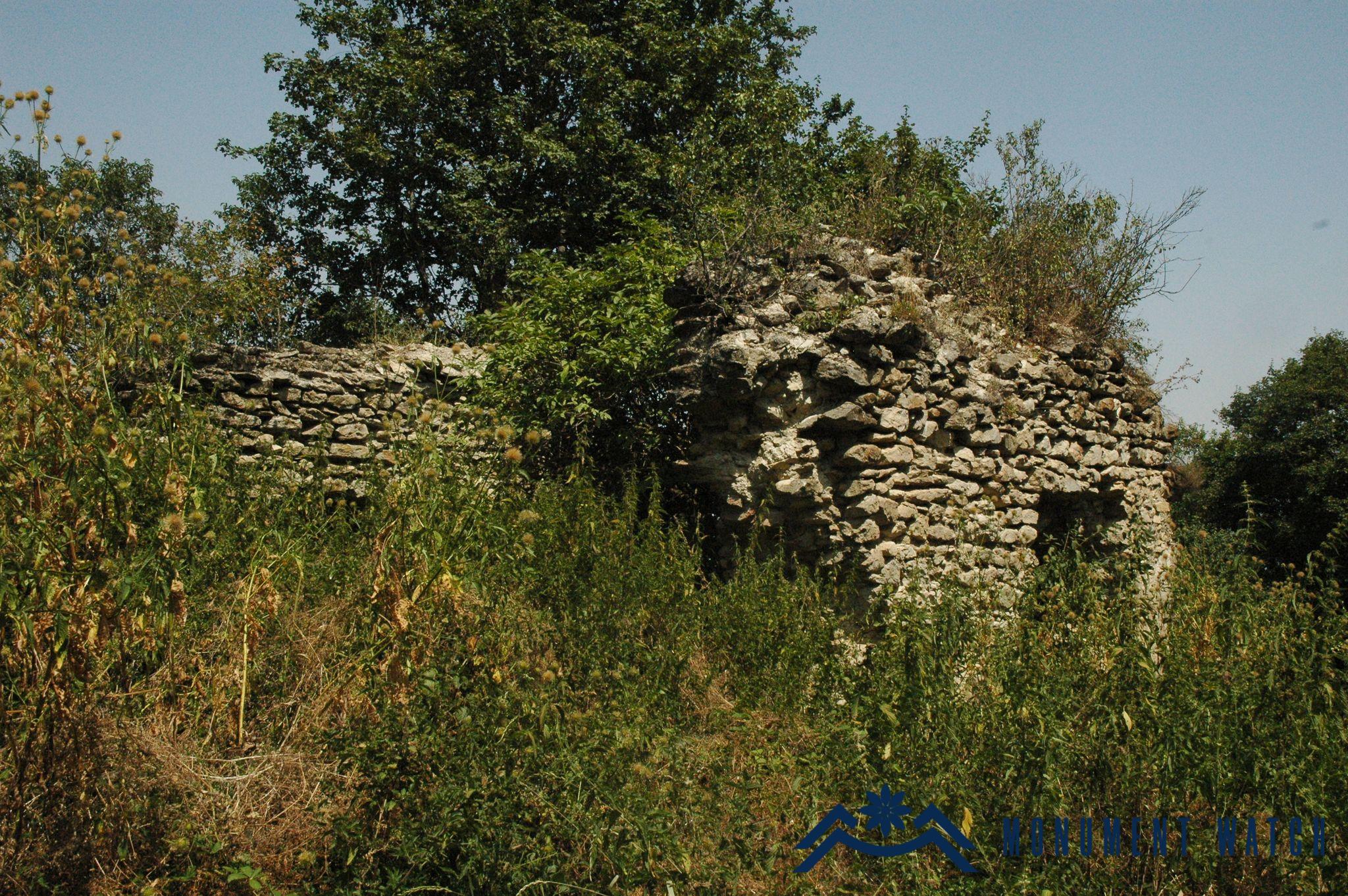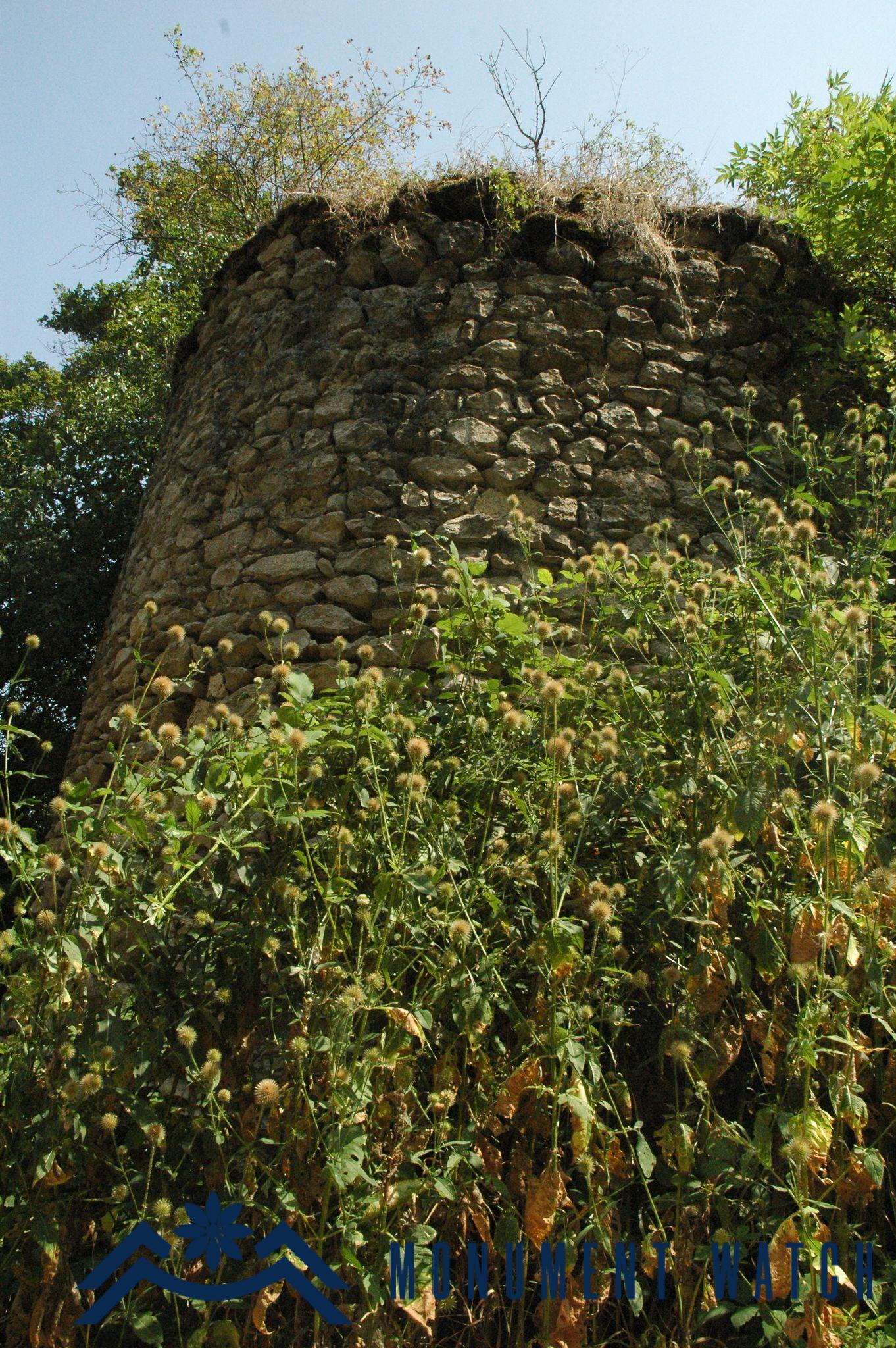The Mansion-Fortress of the Melik Beglaryans on the Brink of Ruin
Following the 44-day war in 2020, Azerbaijan occupied the village of Talish in the Martakert region and its surrounding areas. In the vicinity of Talish, several renowned monuments can be found, such as the mansion-fortress of the Melik-Beglaryans, rulers of Gulistan, and Horekavank. The mansion of the Melik-Beglaryans is situated approximately 4 kilometers to the west of Talish village, occupying the eastern and northern portions of the wooded hillside. Here, one can observe the remnants of two mansions (Fig. 1, for additional information about the monastery: https://monumentwatch.org/en/monument/the-fortress-and-mansion-of-the-melik-beglaryans/).
An analysis of the satellite image dated July 15, 2022, released by the Monument Watch team and accessible on Google Earth satellite service, reveals notable alterations within the monument area (Figs. 2, 3). Before the 2020 war, the mansion, despite being partially in ruins, maintained a relatively intact appearance. Some sections had collapsed, and there were visible cracks (Figs. 4 and 5). The portions that had crumbled over time had not undergone archaeological examination. A pathway once ran between the first and second mansions, leading to Horekavank. The Azerbaijani side has notably expanded this pathway within the complex, involving the removal of trees, disruption of archaeological layers, and posing a direct risk to the structures and tower within the eastern enclosure. This expansion is confirmed by satellite photos available from our partners at http://caucasusheritage.cornell.edu/.
Based on satellite imagery, the destruction appears to have taken place between October 2021 and March 2022.
Our response
Once again, it can be observed that Azerbaijan is continuing to erase Armenian cultural heritage in the occupied regions of Artsakh. Within the occupied territory of Artsakh, the Azerbaijani side is actively conducting extensive road construction and military engineering works, posing a direct threat to the numerous monuments in the region, as repeatedly mentioned. For further details, please refer to: https://monumentwatch.org/en/alerts/the-roads-of-azerbaijan-and-threats-to-the-armenian-cultural-heritage/.
We find it crucial to recall and emphasize that the first protocol of the Convention "On the Protection of Cultural Values in the Event of Armed Conflicts" explicitly forbids the destruction of cultural or spiritual heritage in territories that are under occupation during armed conflicts. The Second Hague Protocol of 1999 reiterates this obligation and categorizes such actions as an international crime, as specified in Article 15. Additionally, the deliberate destruction of cultural property is strictly forbidden by four international conventions and protocols governing the protection of war victims, rooted in the Geneva Conventions of August 12, 1949, which encompass the laws and customs of warfare. This prohibition is further reinforced by pertinent United Nations resolutions and Human Rights Conventions.
